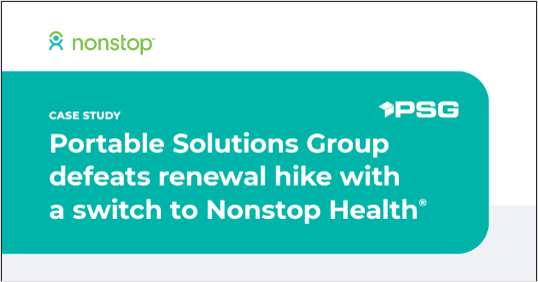 COVID-19 marks a unique opportunity for companies and hiring managers to take a hard look at existing methods of doing business and transform them with newer, more efficient processes. (Photo: Shutterstock)
COVID-19 marks a unique opportunity for companies and hiring managers to take a hard look at existing methods of doing business and transform them with newer, more efficient processes. (Photo: Shutterstock)
COVID-19 is forcing many businesses to rapidly rethink the way they operate – from transforming their revenue models, to working, hiring and onboarding remotely. While unemployment numbers are at a historic high, many businesses are looking ahead to rehire as the economy begins the journey to recovery. As we begin that process, employers have a once-in-a-lifetime opportunity to rethink their hiring processes and permanently change the way they hire and bring D&I goals to life.
|The first step to rehiring with a commitment to diversity
Even before the pandemic, it was clear that we still have a long way to go before we achieve real diversity in the workforce, and the Black Lives Matter movement has brought this important issue to the forefront. And while corporations have committed to various diversity initiatives in recent years (e.g. diversity training programs), more changes need to be made to achieve the improvements we all desire.
A recent meta-study showed that hiring discrimination against Black applicants in the US hasn't changed in 25 years and has only slightly improved for Latino jobseekers. Yet when companies surround themselves with diverse workers, the benefits are tenfold – teams can collaborate and brainstorm with different perspectives, companies experience lower turnover rates, and studies have even shown that as more women have joined the workforce over the last 50 years, wages have grown for both men and women thanks to the talent pool becoming more competitive.
For many companies that still have room for significant improvement in their D&I efforts, not knowing how to successfully source diverse candidates in a consistent, efficient way is the first major obstacle to making progress.
Whether intentional or not, traditional in-person methods of interviewing are often filled with steps that often prevent diverse candidates from moving forward in the process. Resumes can serve as a major roadblock for diverse candidates, especially when companies have policies in place that prevent non-college graduates from applying to openings. Recruiters often spend hours filtering through hundreds or thousands of resumes for a single position. This makes it easy for unconscious bias to enter the recruitment process, in ways many don't realize – like prioritizing a candidate when an alma mater or familiar-sounding last name is recognized.
Another example is the way hiring managers bring candidates in for on-site interviews. While in-person interviews are often used as a way to get to know a candidate better, they also serve as a double-edged sword. Humans constantly seek out ways to connect with each other, and base hiring decisions on arbitrary traits like whether or not they got along with the candidate or had hobbies in common rather than performance indicators.
|How technology can help prioritize D&I in rehiring efforts
One of the best ways to ensure a level playing field is through virtual interviewing. While virtual interviewing has been a growing trend for several years, the pandemic has escalated its use due to social distancing measures. Now, many businesses are turning to virtual interviewing for the first time to meet demand and will soon realize there's no reason to revert back to traditional methods once the economy reopens. COVID-19 marks a unique opportunity for companies and hiring managers to take a hard look at existing methods of doing business and transform them with newer, more efficient processes that can help permanently level the playing field
Virtual interviewing is a win/win for both candidates and employers. One advantage is the accessibility it affords. Candidates can record their interviews at any time, making it easy for those who work a 9-5 job or serve double duty taking care of children to interview for new positions when it's most convenient for them.
Using on-demand technology to deliver structured interviews immediately expands the talent pool and improves the fairness of the process for all candidates. At the same time, it helps reduce human-generated biases by delivering the same experience to every candidate, thereby leveling the playing field in important ways.
On the employer side, recruiters can remain laser-focused on a candidates' traits/skills that predict success in a future role, uncover talent where they least expect it, and sort through thousands of applications in a matter of hours. Skills-based pre-hire assessments can be added to on-demand interviews, ensuring consistency by asking every candidate the same open-ended questions, giving each interviewee a fair and objective method of evaluation.
|Common misconceptions: Combating bias with science
Virtual interview tech companies work to train the algorithms used to create virtual interview assessments on an ongoing basis, working to mitigate the impact of conscious and unconscious human bias in the interviewing process. Industrial-organization psychologists perform a Job Analysis to closely analyze each job role to determine which competencies or traits have been shown to result in job success. Then, assessments are created that focus on measuring only these job-specific competencies.
Many companies uphold themselves to a rigorous standard to make sure bias doesn't creep into the process. In the US, many follow what's called the "4/5th Rule" — the Equal Employment Opportunity Commission's Uniform Guidelines for Employee Selection Procedures — to test algorithmic assessment models and ensure they do not have an adverse impact against specific groups (including gender, race and age). By building upon these standards and seeking out input from a team of external data science researchers, hiring technology companies can make sure that the interview process remains fair for all candidates.
|Virtual interviewing is here to stay
Now that the country is beginning to reopen and many companies (including Twitter, Square, Facebook and others) are moving to allow their employees to work remotely on a permanent basis, it's only natural that the recruiting, interviewing and onboarding processes will become virtual, too. All sectors and industries can benefit from using technology to hire at scale with D&I in mind, which can expedite the hiring process from weeks to days to keep up with demand. As companies look to fill positions with a substantially larger talent pool to choose from, now is the time for them to implement technology to cast a wider net and prioritize diverse hires — permanently.
Kevin Parker is CEO of HireVue, which has hosted nearly 15 million virtual interviews for many companies. They've seen many customers accelerate their interview timelines from months/weeks to a matter of days, while keeping D&I efforts at the forefront.
Read more:
Complete your profile to continue reading and get FREE access to BenefitsPRO, part of your ALM digital membership.
Your access to unlimited BenefitsPRO content isn’t changing.
Once you are an ALM digital member, you’ll receive:
- Breaking benefits news and analysis, on-site and via our newsletters and custom alerts
- Educational webcasts, white papers, and ebooks from industry thought leaders
- Critical converage of the property casualty insurance and financial advisory markets on our other ALM sites, PropertyCasualty360 and ThinkAdvisor
Already have an account? Sign In Now
© 2024 ALM Global, LLC, All Rights Reserved. Request academic re-use from www.copyright.com. All other uses, submit a request to [email protected]. For more information visit Asset & Logo Licensing.








